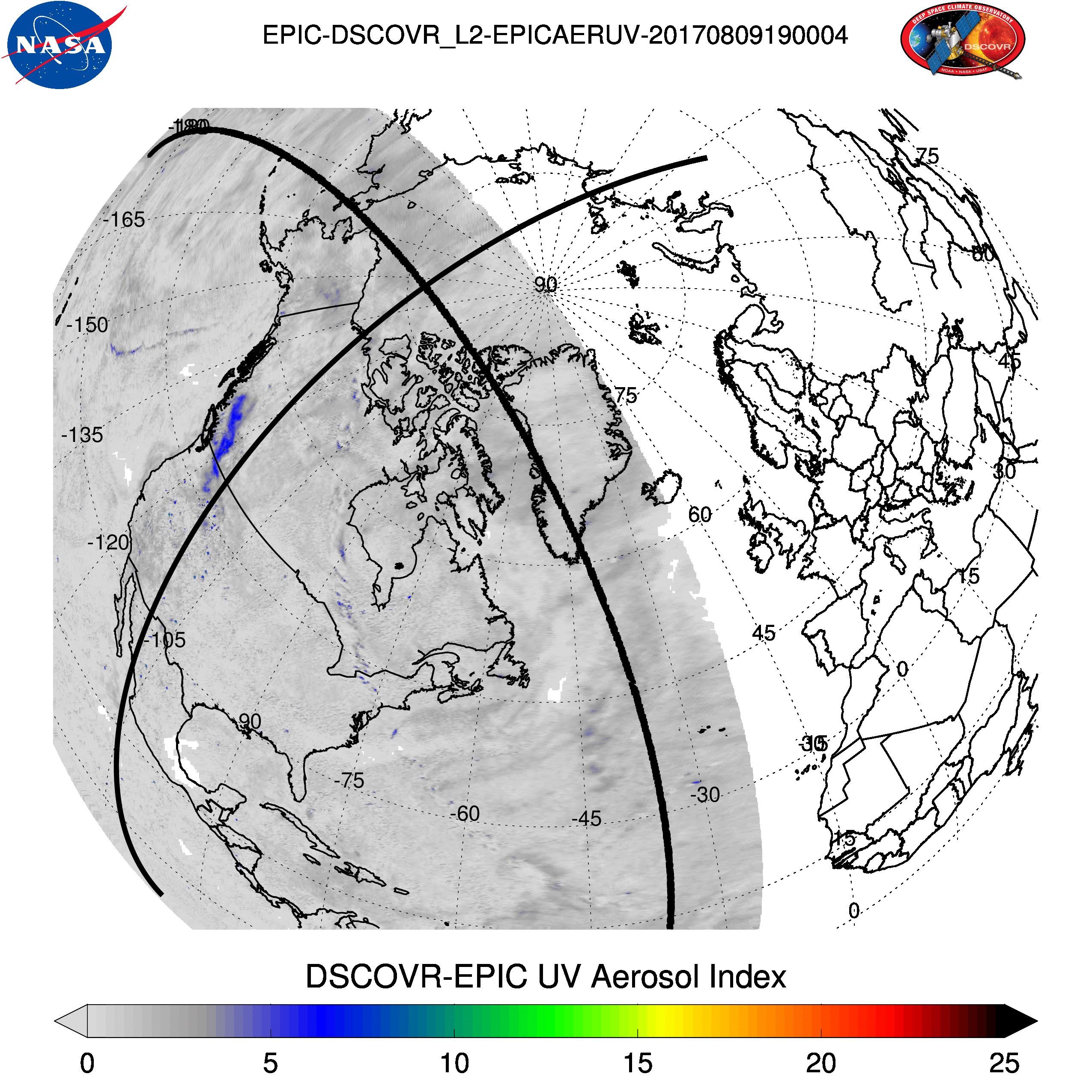EPIC UV Aerosol Products
A variety of aerosol and aerosol-related products are derived from EPIC's observations. EPIC extends the multi-decadal long UV Aerosol Index (UVAI) record started in 1979 with TOMS and currently available from OMI observations. The EPIC UVAI detects carbonaceous aerosols, desert dust particles, and volcanic ash over the oceans and the continents under both clear and partly cloudy conditions, as well as over extremely bright backgrounds such as snow/ice surfaces and cloud decks. In addition to the qualitative UVAI product, EPIC observations yield aerosol optical depth (AOD) in the UV-VIS range, and near-UV single scattering albedo for both absorbing and non-absorbing aerosol types under cloud-free conditions using a modified version of the OMI aerosol algorithm. Because of the sensor's coarse spatial resolution, sub-pixel cloud contamination affects both the frequency of retrievals and the quality of the retrieved aerosol parameters. Figure A1 shows retrievals of UVAI, aerosol optical depth, single scattering albedo and absorption optical depth associated with smoke and desert dust events in Africa.
Recently developed retrieval approaches are applied to EPIC observations to obtain the optical depth of aerosol layers above clouds, as well as the cloud optical depth unaffected by aerosol absorption effects. Additionally, radiance measurements in the oxygen A- and B-bands are used to simultaneously derive the optical depth and the height of elevated desert dust and smoke aerosol layers over the oceans.
The EPIC UV aerosol products are available at the Atmospheric Science Data Center (ASDC) at NASA Langley Research Center: https://search.earthdata.nasa.gov/search/collections?q=dscovr_epic_l2_aer_01&ok=dscovr_epic_l2_aer_01
See also https://eosweb.larc.nasa.gov/project/dscovr/dscovr_epic_l2_aer_01.

Figure A1. EPIC derived UV aerosol index (top left), 388 nm aerosol optical depth (top right), 388 nm single scattering albedo (bottom left) and aerosol absorption optical depth (bottom right) derived from observations on August 7, 2016, 10:25 UTC.
Stratospheric Smoke Plume
